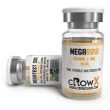In the world of skincare, finding the right products to address specific skin concerns can be a challenging task. This is particularly true for individuals dealing with fungal acne, a condition caused by an overgrowth of yeast on the skin’s surface. When it comes to managing fungal acne, one crucial aspect is checking product labels carefully. By understanding the significance of checking product labels and being aware of the key ingredients to avoid, individuals can make informed choices that support their skin health and effectively address fungal acne concerns.
The Complexity of Fungal Acne
Fungal acne, also known as pityrosporum folliculitis, is a skin condition that differs from traditional acne. It is caused by an overgrowth of yeast called Malassezia on the skin. These yeasts feed on the skin’s oils, leading to inflammation, redness, and the formation of small, itchy bumps. Managing fungal acne requires a tailored approach, as certain ingredients commonly found in skincare products can worsen the condition.
The Role of Product Labels
Product labels serve as a vital source of information for consumers. They provide details about the ingredients, usage instructions, and potential allergens or irritants present in the product. When dealing with fungal acne, carefully checking product labels becomes crucial. It allows individuals to identify potential triggers, avoid harmful ingredients, and select products that support their skin health.
Key Ingredients to Avoid
1. Comedogenic Oils: Fungal acne-prone skin should steer clear of heavy oils that have a high comedogenic rating. These oils can clog the pores and worsen the condition. Ingredients such as coconut oil, cocoa butter, and olive oil are examples of comedogenic oils to avoid.
2. Fatty Acids: Certain fatty acids, such as lauric acid and myristic acid, can contribute to the growth of Malassezia yeast. These ingredients are commonly found in products like coconut oil, which should be avoided by individuals with fungal acne.
3. Esters and Polysorbates: Esters and polysorbates are emulsifiers commonly used in skincare products. While they may be harmless for most people, individuals with fungal acne should exercise caution, as these ingredients can potentially feed the yeast and worsen the condition.
4. Fragrances and Essential Oils: Fragrances and essential oils can be potential irritants for sensitive skin, including fungal acne-prone skin. They may cause inflammation and exacerbate the symptoms. Opting for fragrance-free or unscented products is a safer choice.
5. Heavy Moisturizers: Thick, occlusive moisturizers can create a barrier on the skin, trapping heat and moisture. This environment can promote the growth of Malassezia yeast. Individuals with fungal acne should opt for lightweight, non-comedogenic moisturizers that won’t suffocate the skin.
Verifying Product Claims
In addition to checking ingredients, it’s essential to be cautious of misleading product claims. The skincare industry is vast, and companies often make bold statements about their products. However, not all claims are backed by scientific evidence. Researching the brand, reading reviews from reliable sources, and consulting with dermatologists can help individuals make informed decisions.
Conclusion
When dealing with fungal acne, checking product labels becomes an essential part of a skincare routine. By carefully examining ingredients and avoiding known triggers, individuals can minimize the risk of aggravating their condition and find products that support their skin health. Staying informed, understanding key ingredients to avoid, and seeking professional guidance when needed empower individuals to make informed choices and take control of their skincare journey. Remember, knowledge is power when it comes to achieving healthy, radiant skin while managing fungal acne effectively.












